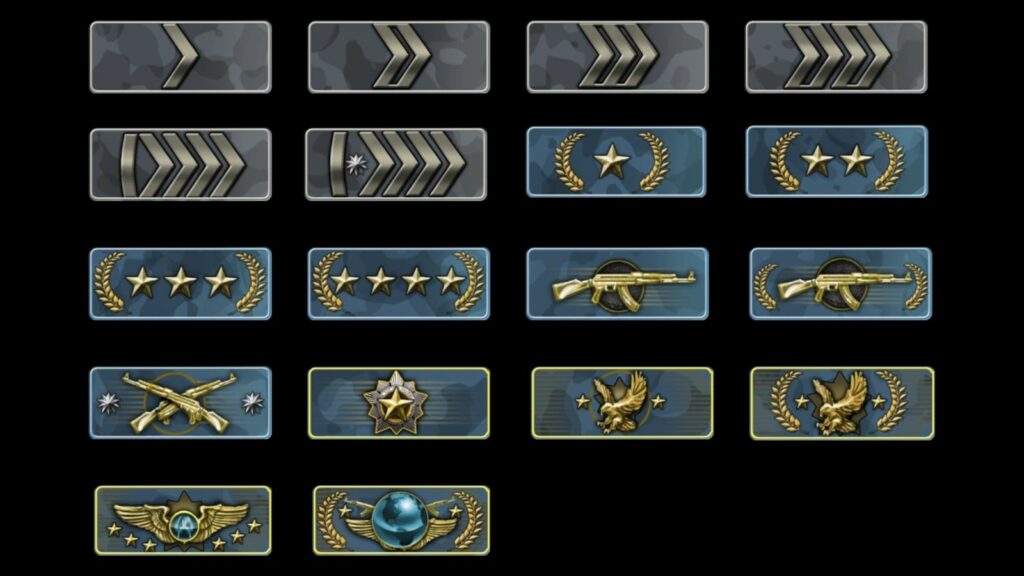Print Fix Hub
Your go-to source for everything print-related, from troubleshooting to tips.
The Rank Rat Race: CSGO Matchmaking and the Quest for E-Sports Fame
Dive into the thrilling world of CSGO matchmaking and uncover the secrets to climbing the ranks on your quest for e-sports glory!
Understanding the CSGO Matchmaking System: How Ranks Work
The CSGO matchmaking system is designed to provide players with balanced and competitive matches. At the core of this system are the ranks, which categorize players based on their skill level. Players begin their journey in unranked matches, where they establish a baseline skill rating. Once they reach a certain level of proficiency, they can enter ranked matches, where they'll be assigned a specific rank ranging from Silver to Global Elite. Understanding how these ranks work is essential for any player looking to improve their gameplay and climb the competitive ladder.
Each rank in the CSGO matchmaking system is further divided into sub-ranks, allowing for finer differentiation among players. For example, a player at Silver I is less skilled than someone at Silver IV. The matchmaking system takes into account various factors, including individual performance, win-loss ratio, and overall team dynamics, to assign players to matches of appropriate skill levels. Additionally, players can expect fluctuations in their rank based on their performance in consecutive matches, making it important to remain consistent. By grasping how ranks operate within the matchmaking framework, players can devise strategies to improve their skills and achieve their desired ranks more effectively.

Counter-Strike is a tactical first-person shooter game that has captivated millions of players around the world. The game's mechanics center around team-based gameplay where players assume the roles of either terrorists or counter-terrorists. One of the popular weapons in the game is the m249, known for its firepower and effectiveness in suppressing enemy fire.
Top Strategies to Climb the Ranks in CSGO: Tips from the Pros
When it comes to climbing the ranks in CSGO, understanding the fundamentals is crucial. One of the top strategies employed by professional players is to master the art of crosshair placement. Always keep your crosshair at head level and pre-aim common spots where enemies are likely to appear. This simple yet effective technique can give you a significant advantage in aim duels. Additionally, consider utilizing smokes and flashes to control engagements; learning common smoke lines can provide cover for strategic map control.
Another essential strategy is to cultivate effective teamwork and communication with your teammates. Use voice chat or in-game commands to call out enemy positions and strategize plays. Moreover, studying professional gameplay through streams or tutorials can shed light on how top players make decisions and adapt to their opponents. Don't forget to analyze your own gameplay by reviewing demos or gameplay footage to identify areas for improvement. By implementing these strategies, you will be well on your way to ranking up in CSGO.
Is E-Sports Fame Worth the Grind? A Deep Dive into the CSGO Competitive Scene
The world of e-sports has exploded in popularity over the last decade, and CSGO (Counter-Strike: Global Offensive) stands at the forefront of this competitive scene. Players from all corners of the globe dedicate countless hours to grinding out strategies, perfecting their aim, and mastering various game mechanics. But is this commitment to the grind truly worth the fame that comes with success? Many aspiring e-sports athletes find themselves torn between the demanding practice schedules and the allure of recognition, sponsorship deals, and the potential for a lucrative career. In the end, one must consider the trade-off between the required effort and the eventual rewards.
In the CSGO competitive landscape, success does not come easy. Players must not only be adept at the game itself but also excel in teamwork and adaptability within ever-evolving meta strategies. For those willing to put in the effort, the potential payout is significant. Top players can earn substantial income through tournament winnings, streaming, and brand endorsements. However, it's worth noting that only a small percentage of competitors break into the upper echelons of the scene. Thus, a crucial question remains: is the grind worth it? Ultimately, the answer may vary from player to player, depending on their passion for the game and their goals within the e-sports community.